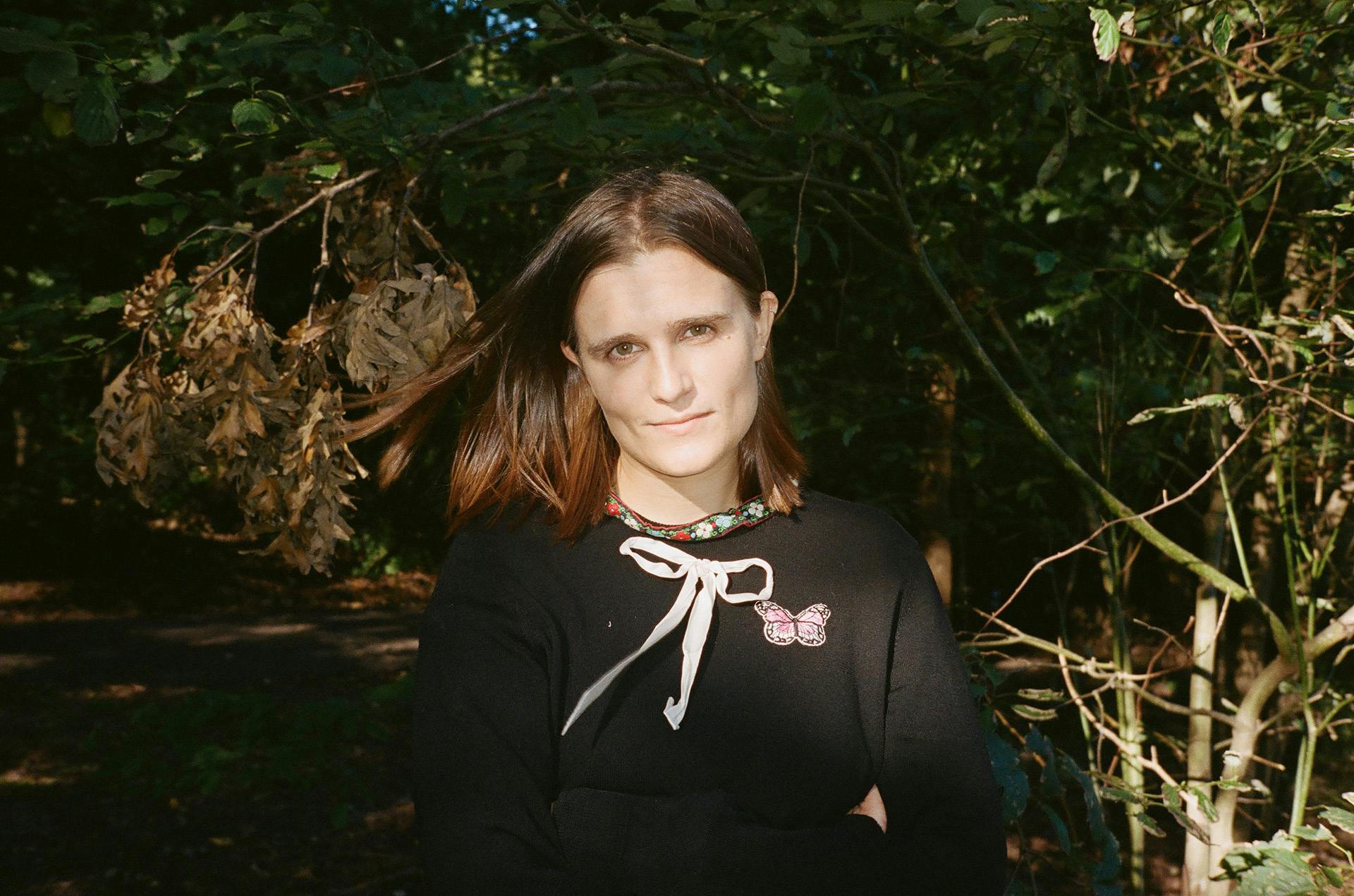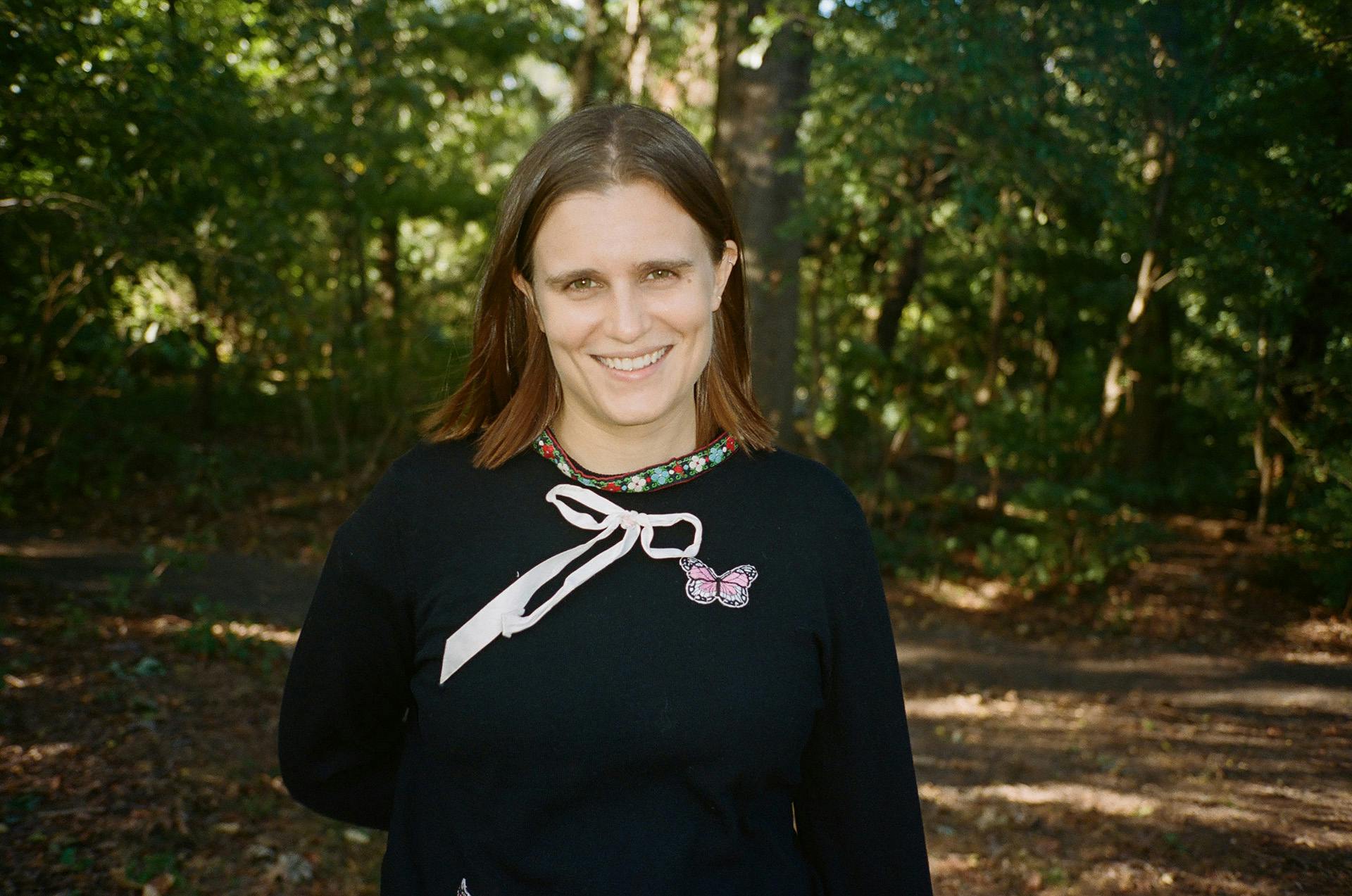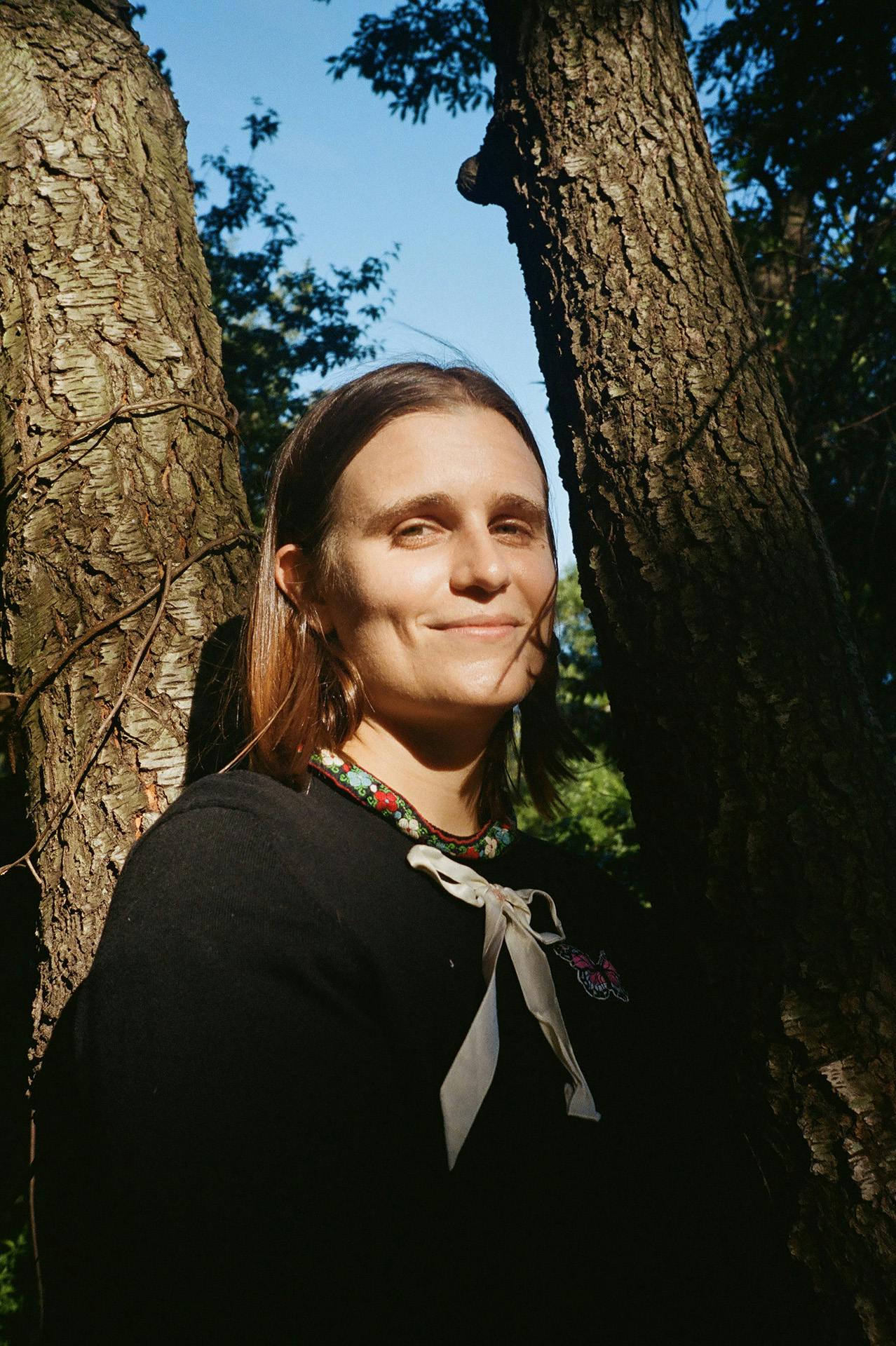Claire Christerson
In terms of your art practice, how has COVID impacted your plans this past year? Have you had commitments that wound up being pushed back or cancelled?
A few, actually. This past January, I opened a solo show in LA at a gallery called AALA. The show was called “Through the Window Up the Stairs,” and it opened January 25th, 2020. I was supposed to fly out on March 16 to close the show and do an artist talk, but it got to the point where I had to make the decision if I was even going to go. This was still a few days before lockdown actually happened, but everything was already in panic mode by then, so I ended up not going, and we decided just to leave the show up until things calmed down. I was also supposed to do NADA House out on Governors Island in the summer, but that got indefinitely postponed.

It seems like you’ve still been quite productive in the interim, which I’d guess is thanks in part to your studio being in your apartment. Lockdown wasn’t necessarily as disruptive on that level.
I live in a three-bedroom apartment in Carroll Gardens: my roommate has the biggest room, then there’s a medium-sized bedroom that I use as my studio, and then a small bedroom that I sleep in. It’s worked out really well, especially during this period. Looking back, I’m so grateful that I made the choice to have the studio in my house; it’s definitely made it easier to keep working.
As someone who works from home, how do you negotiate the mental (if not physical) divide between “workspace” and “living space”?
I've never made work outside of my house, except for the studio I use to make ceramics. I've always liked working where I live, because I like creating in a space that feels like a home. I like having access to things all the time—not just my art materials, but also my books and my journals, things to look at—and honestly, even when I'm not in my studio, I feel like I'm always working ideas out in my head, so it’s nice to have everything right here when I find something I want to work on. It is nice to have a bedroom I can go to, but I'm not sure there's actually much of a separation. It’s more about making an overall environment that feels nice.
How do you cultivate that feeling? For instance, have you arranged or decorated the studio in a particular way?
Well, I like when a room feels like it’s scrapbooked together, if that makes sense. I like to keep things very tactile. So I’ll have new drawings or paintings on the walls, but I also have a lot of personal items: baby pictures, photos of my family and my friends, art that my friends have given me. A lot of my work stems from my journals, so I like having those nearby, too.
Are the journals from a particular time in your life?
I've had journals since I was a little kid, but I’ve kept them pretty consistently since I was about 18, so it’s been almost ten years. I think I have thirty-two of them now. They’re really important to me, because that’s where I like to work out my ideas. A lot of my drawings start out in my journals. But it’s also nice to have these time capsules to refer back to and see how my thoughts have developed. It makes me appreciate my own thought process, in a way. For me, writing and drawing are very helpful for working through ideas and feelings, but then, what I’ve written or drawn can also also be useful for inspiring new ideas later on. So the journals are a place where all of these things are playing out and overlapping.
I love the idea that the work grows with you over time—although in your case, it’s also interesting to see how the past remains an active, even vital part of that growth. A couple years ago, you published a zine, Fractures in My Structures, that collected drawings and journal entries from your high school years. Looking through those pages, I was struck by how far back some of the motifs in your work actually go, and by the fact that you’re still able to look to them for inspiration. For many artists, time and distance can make it difficult to relate to older work—but it seems like that process of disassociation didn’t happen for you, even going back to your childhood drawings.
Oh, yes. I’m always trying to go back in time. I never want to not think like that, because when you start letting go of that, you lose your flexibility. I have grown in my own practice; I can see that my drawings are getting tighter, more refined. That’s good, in a way, and I guess it happens naturally, but I also don’t want to go too far in that direction. I want to always be discovering new things. That’s why it’s so important for me to keep the journals. If you’re able to look at where you started, and why you started, it helps remind you of that learning process. It keeps things open, rather than getting too caught up in perfecting some small detail. So I think it’s important never to push old things away, because you can always learn something from them again.
You spoke a moment ago about using drawing as a vehicle for processing thoughts and emotions. Do you feel like that ends up directly informing the work itself? To what extent would you say the resulting imagery reflects or conveys those emotions?
It depends, because sometimes I'm just drawing because that's what I like to do, and then other times it’s a little more serious. My characters and motifs always come from repetitive drawing, where I’ll be working something out over and over until it becomes another thing, a new symbol. The symbols could maybe be seen as vague if you don't know me personally, but a lot of them are definitely rooted in personal narrative, and memory, and seeing myself in certain things. For example, I really relate to butterflies, and things with wings, and just nature in general. I use a lot of motifs that come from nature, because it’s persistent and resilient.
I’d also imagine it’s not always a 1:1 translation, where you're sitting there and saying, “Here is a concrete response to a given experience.” Elements can have double-meanings, hidden meanings, shifting meanings. Have there been instances where you'll make a work and then go back and look at it, and try to figure out why you made it and what it actually signifies?
Oh, all the time. There are things that are extremely intentional, and then there are things that come out of mistakes, where I’ll be drawing in my journal and one thing leads to the next. My first solo show definitely incorporated a lot of motifs surrounding death, because I was going through loss. But other times, it’s more intuitive, where I’m doing what feels right at that moment, and it’s only after that I really understand what it all means. I feel like maybe the work is always telling a story, but the story itself isn’t always so linear and logical.

It’s interesting, because in reading things that have been written about your work, I’ve seen suggestions that the fantastical elements are “masking” the autobiographical elements, which doesn’t sound like is actually the case. The work’s fantastical, but it doesn’t seem escapist or abstract; it’s more like a process of working through, of coding and decoding. What do you think about that? Do fantasy and escapism necessarily go hand in hand? Is fantasy any less honest or emotional than “realism”?
I think fantasy can be very personal. For me, drawing has always been a really helpful way to work through things like grief and anxiety. It’s just easier to address certain emotions through depictions of specific kinds of characters or symbols. So it may seem light-hearted, but a drawing of a bat or a spider can end up taking on more of a serious subject matter for me. It’s just a way of sharing something personal with other people. Same thing with the videos: I feel like making video work is actually the most challenging part of my practice, because I feel that's where it actually really gets a little too real sometimes. Video is a really vulnerable medium, and I have a harder time sharing that with other people. For some reason, it’s easier with works on paper.
I don't want to sound too self-indulgent, because it’s not always so serious. More than anything, I’m interested in making uplifting imagery. I want to create a joyous experience in the work. If I'm really feeling sad, or if I'm feeling a type of way about something, it's helpful to make a drawing that makes it beautiful to me. It becomes something I want to see in the world.
I love that. I can understand not wanting to equate your artmaking with therapy—although I will say, the idea that art might provide that kind of consolation or solace is reaffirming on some level. It’s easy to lose sight of that potential, especially in the context of New York art circles. We tend to set art aside from craft, or even from other commodities, for supposedly lacking a “function,” but art can serve any number of functions: catharsis, healing, intellectual exchange, enthusiastic expression...
Or even just preserving a memory.
Exactly. It’s always nice to find artists who haven’t lost sight of these other roles art can take on. I also feel like when one creates through that lens, it translates to the work and, ultimately, to people’s experience of that work. I certainly feel that way in looking at your pieces.
I appreciate you saying that, because sometimes I do get worried about it. I'm good at overthinking, and for me, drawing is actually a really helpful way to work through that. But I also feel like there's something to be said for just putting it out there. If you're feeling a type of way, and you make something that's dramatic, it's so rewarding to just be like, “That's what I was feeling, and I put it into that piece. And now I can move on and deal with other things.” That can actually be life-changing sometimes.
Absolutely. So there were a few things I wanted to ask you about “Through the Window, Up the Stairs.” First, it seems like the show continues a pattern in your solo exhibitions, where each body of work is centered on a narrative, something almost like a fairy tale. In “Daisy Chains Heart Ecology,” a character named Grizelda navigates an alternate universe filled with faeries and monsters; in “Night Shade,” a character named Agatha overcomes nocturnal insecurities by embracing the dark and turning her fear into love. Along those lines, how would you describe the narrative for this show? What are some of the overarching ideas that tie the works together?
Well, something I’ve noticed over the past two years or so is that the bodies of work will switch between being outdoor-themed versus being indoors. With this show, it definitely took on more of an indoor attitude. It was very heavily inspired by the house that my grandma lived in until she passed away. She lived in this house in LA, and even though I grew up in New York, I spent a lot of time there. I was thinking about all of the curiosities of being a kid in this house that had rooms and stairs that you could explore, and then I connected that to these ideas of rooms in rooms, and of memories being kept in rooms. So in the work, I incorporated characters that represented different family members/memories I have, and created a mini-world that was set in the form of a house.
With a presentation like this, where you’re telling a story through numerous pieces and a wide range of mediums, how does it all come together? Does the narrative have to be firmly in place before you start making the work? Or do your ideas cohere as the pieces develop?
I guess I don’t think about narrative in a straightforward way. When I make drawings, I’m repeating something over and over until I find something new. I’ve looked at this one thing from all these different angles, and that’s when I start to build out a narrative—or maybe not, if it doesn't feel necessary. But even if there's not an intentional narrative behind it, I really like the idea of storytelling, and I’m interested in how storytelling can happen through repetition, with things growing on top of each other. That’s really what happened with “Through the Window Up the Stairs.” I made all of the works on paper first, then created this body of ceramic work based on them, and then made a video. I used the works on paper as an entry point to reiterate the themes in other mediums, like a map.

Something I really appreciate about your approach is that you also seem to be exploring the possibility of telling stories without words—of leaving gaps in language, even linearity, and relying instead on imagery and composition. You’ve spoken elsewhere about your interest in the visual strategies of comics, which makes sense. It also reminds me of certain modes from antiquity, like illuminated manuscripts or even stained glass: the vignettes, the constellations of symbols and characters, the narrative unfolding not just visually, but also spatially.
Oh yes, definitely. I love stained glass. I see it as one of the first forms of comics. Stained glass is an interesting way to think about storytelling, because it’s looking at how things are placed; there is the essential scene in the middle and then sub-stories happening on the sides. It’s a way to give different perspectives on one scenario.
For the past few years, I've been looking at Renaissance paintings, trying to understand the specific ways stories are told. It’s about building narratives on paper that let your eye travel around to piece the story together in whatever way you want. I’m really interested in that. I actually made a whole notebook right when I was beginning to work on the AALA show that was about this one painting at the Met that I spent a lot of time looking at: The Life and Miracles of Saint Godelieve, from the 15th Century.
Speaking of the Met: Before COVID hit, you were regularly visiting the museum’s study room for drawings and prints. I was just telling a friend earlier today how much I miss being able to spend time there.
Yes! I was going there at least twice a month for almost two years. I really miss it, too. The fact that it’s open to the public is so cool. There’s so much great work there.
I know! It’s a pretty incredible resource.
I almost couldn’t believe it when I first started going. Sometimes I would just type in random words into their online catalogue and see what came up. I ended up discovering so much interesting work that way.
Did any of the things you found there inform the work in “Through the Window, Up the Stairs”?
Oh, definitely. When I was in the beginning stages of working on the show, I knew I wanted the work to be really flat. No watercolor at all, just gouache on cold-pressed paper. I wanted to challenge myself and make something that felt like a collection of statement pieces, where everything was very upfront and clear: a figure doing an action, without any motifs around it. I just wanted everything to be direct. So I started looking at work by Erté, who was this Russian-French costume-designer-slash-artist. He made a lot of Broadway signs, but he also did a ton of gouache works on paper that are in the drawing and prints library. It was so incredible to be able to examine those pieces closely and see how he worked with perspective in these really flat ways while still making the scenario three-dimensional. Someone else that I was looking at a lot (and still am) is Odilon Redon. He’s really known as an oil painter, but he also did a huge body of etchings that are really great.
I love his paintings, but I don’t think I’ve ever seen his etchings.
They’re so good. They’re very fantastical; he’s really interested in sci-fi and fantasy. It was inspiring to see that work up close. Then I was looking at some of Picasso’s prints for a while, too. And then I always love looking at Aubrey Beardsley. He’s a favorite, because he worked in black and white, and that’s really where my drawing practice started, so it’s always inspiring to go back to that. I’m actually hoping to shift from doing all of this color stuff to move more into black and white again.
Going back to the source.
Yes. For me, black and white is associated with the journals. That’s how I would draw. I also just think there’s something really beautiful about nice linework, which I was doing less of with all of this color work. It’s sort of like we were saying before: I’m going back to an old approach, in a way—but in going back, you always end up finding something new to do with it. So I’m curious to see what happens this time.
◆
Photographs by Hannah Metz
